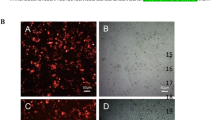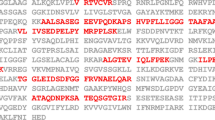Abstract
Invasive cervical cancer is very highly correlated with the presence of high-risk human papillomavirus (HPV) types 16 and 18. Two viral proteins, E6 and E7, act in concert to subvert growth control of infected cells by inactivating the tumor suppressor proteins, p53 and Rb, respectively. E6 is thought to abrogate p53 function by stimulating its degradation via ubiquitin-mediated proteolysis in a reaction requiring E6AP (E6-Associated Protein). Here we evaluate the in vivo role of E6AP in p53 degradation in normal and HPV-infected cell types using antisense phosphorothioate oligodeoxynucleotides (S-ODNs). This study shows that reduction of E6AP in vivo in high-risk HPV-infected cells leads to an elevation of p53, confirming the function of E6AP predicted by in vitro experiments. Further, we demonstrate that reduction of E6AP in normal cells has no effect on p53 levels, indicative of an E6AP-indpendent mechanism for p53 degradation. These experiments show that inhibition of intermediate proteins in the ubiquitin-mediated proteolysis pathway (ubiquitin-conjugating enzymes or associated recognition proteins) can result in specific inhibition of substrate degradation. We propose that modulation of p53 levels by elimination of E6AP function may have therapeutic potential for cervical cancer.
Similar content being viewed by others
Author information
Authors and Affiliations
Rights and permissions
About this article
Cite this article
Beer-Romero, P., Glass, S. & Rolfe, M. Antisense targeting of E6AP elevates p53 in HPV-infected cells but not in normal cells. Oncogene 14, 595–602 (1997). https://doi.org/10.1038/sj.onc.1200872
Received:
Revised:
Accepted:
Issue Date:
DOI: https://doi.org/10.1038/sj.onc.1200872
- Springer Nature Limited
Keywords
This article is cited by
-
Subcellular organization of UBE3A in human cerebral cortex
Molecular Autism (2018)
-
Targeting HPV16 E6-p300 interaction reactivates p53 and inhibits the tumorigenicity of HPV-positive head and neck squamous cell carcinoma
Oncogene (2014)
-
Ubiquitin over-expression promotes E6AP autodegradation and reactivation of the p53/MDM2 pathway in HeLa cells
Molecular and Cellular Biochemistry (2008)
-
p73β-expressing recombinant adenovirus: a potential anticancer agent
Cancer Gene Therapy (2005)
-
E6AP gene suppression and characterization with in vitro selected hammerhead ribozymes
Cancer Gene Therapy (2003)




